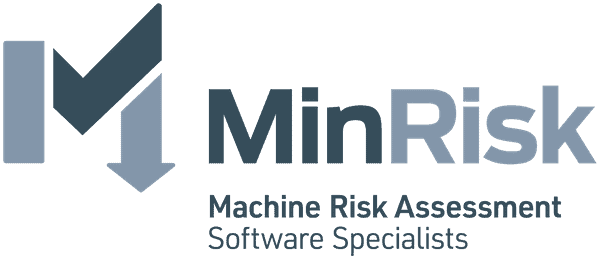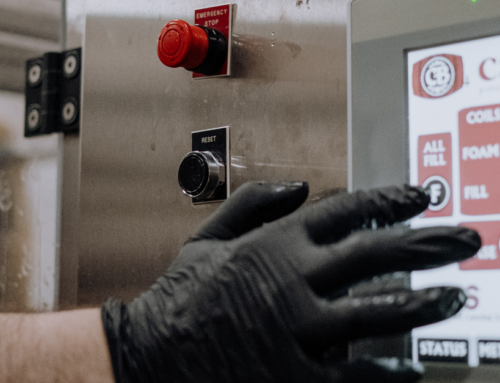Confused about when you should be getting a risk assessment? Or whether you really need one? We’ll explain why you need to understand your workplace hazards and when you should consider getting a risk assessment completed.
Do you really need a risk assessment?
The short answer is yes.
No matter the industry, a manufacturing business will have a range of machines on site. These can range from large engines and steam turbines to conveyors and wrappers. Every machine, no matter how big or small, carries some degree of risk.
While designers, manufacturers, suppliers and employers all have some level of responsibility in ensuring a machine is safe to use, first and foremost it is the company director that must ensure the systems and resources in place provide a suitably safe work environment for their employees.
WorkSafe stipulates that employers must keep workers safe from hazards in the workplace by identifying and managing all forms of risk. As well as preventing injury to operators and other workers, safer machinery results in improved operating efficiency and reduced downtime. Successful risk assessment and risk management is a win-win for employees and employers alike.
Why do I need to consider a risk assessment?
When faced with the task of assessing all the machines in your facility for compliance and safety guarding, where do you begin?
Most employers and Health and Safety officers assume the most obvious place to start would be with the most dangerous machines. But how do you define ‘dangerous’? How do you prioritise one machine as more dangerous – or more urgent – than another? That’s why a risk assessment from an expert safety engineer is so important.
Industry machinery is becoming more and more complex. Automated machines, lasers, blades, conveyors and other equipment has created a workplace environment with additional risks and hazards. Upgrades, retrofits, wear and tear, periodic maintenance, modifications, cleaning and other machine interactions can change the original configuration of a machine, creating or introducing new hazards.
To effectively manage risk, both you and your workers must know how and where potential risks can occur while using a machine, or being in the vicinity of a machine. A risk assessment will identify these risks and provide solutions for how they can be minimised and or eliminated. Risk and hazard fixes aren’t always expensive. Small adjustments or new processes can often take a machine from dangerous to safe, within a short period of time.
What does a risk assessment involve?
A comprehensive machine risk assessment involves a machine safety expert reviewing each machine in your facility for existing guarding, compliance to appropriate standards and identification of where a more thorough risk assessment and/or corrective action might be needed.
The limits of the machine are determined, the various tasks and persons performing each of those tasks are documented and the risks associated with each task are ascertained. Each task hazard is weighted for severity of injury, frequency of exposure and possibility of avoidance. These three factors are combined to determine a risk level for each hazard.
A machine risk assessment should follow the below steps:
- Identifying machinery and the associated hazards in the workplace
- Assessing the probability of risks and the severity of harm
- Reducing the risk of harm by eliminating the hazard or using machine safeguarding methods
- Documenting the process and the results.
When should I get a risk assessment?
The design stage is the best time to check and control the hazards associated with machinery. The best opportunity to eliminate hazards is when designing a new machine, or changing an existing machine. WorkSafe recommends eliminating hazards at the start of the design process.
Five situations where management should undertake a risk assessment.
- Changes are made to existing equipment
- New machinery or systems are introduced to the workplace
- New tasks are added, or a new routine is devised
- Changes to the level of risk to individual employees – for example, where an employee returns to work after a period of long-term sickness absence
- Time, depending on the machinery – scheduled assessments may be best practice.
Hazard identification and management should be completed and monitored regularly to make sure control measures are working and no new hazards have been introduced.
Checklist for Health and Safety teams:
Company directors or owners should regularly discuss risk assessment with Health and Safety teams and front-line employees and the importance of a workplace free of hazards. This is a handy checklist of questions to ask at regular meetings.
- Do you have new machinery? Was it risk assessed? Are you confident it complies?
- Do you have new staff? Have they been told about machine risks?
- Have you introduced new processes? Do you understand the risks of those?
- Has a worker had an accident involving machinery?
- Has it been over two years since your last risk assessment?
- Was your last risk assessment done by an expert?
What should be risk assessed?
In short, everything. Don’t limit your risk assessments to just the areas that you or your team think to be hazardous. A machine risk assessment will examine not only the machines but your work environment including ergonomics, noise levels and much more. In the event of a safety violation or litigation, you must be able to demonstrate that the risk assessment was sufficient for the given hazard.
Do I still need a risk assessment if my company is only small?
Yes! Every business, regardless of their size, must conduct a risk assessment periodically.
You must also thoroughly document the results of any risk assessments. If an incident with a machine occurs, this documentation will be invaluable to the investigation. You will be able to show that a risk assessment was done properly and that all necessary risk mitigation strategies were put into place.
Can risk assessments be conducted internally?
Conducting a risk assessment internally may seem like a good way to save money, but it may end up costing you more. Why?
Machine safety is highly complex. When a company carries out its own risk assessment internally, they typically lack the competency to recognise problems. In many cases, your internal health and safety team will not be skilled and/or experienced enough to identify all risks present. They may be able to identify risks, but the controls they suggest are often insufficient.
If the original risk assessment isn’t comprehensive enough, the solutions will be lacking the details and data require-d to ensure safety. It is very easy to miss a potential hazard which can then lead to an incident or injury.
If an employee is injured by a machine due to an unforeseen risk, you will then be liable for fines, penalties, loss of production and more. Remember, the final responsibility for personnel safety is still that of the employer.
Who should undertake my hazard and risk assessment?
Competent third-party consultants can greatly enhance the risk assessment process. A qualified team will provide expert assessment of cause and identify additional hazards with options for addressing and mitigating risks. Only a qualified technician will be able to identify, measure, project, and resolve risks.
Machine safety technicians such as TEG Risk specialise in risk assessment. They carry out in-depth audits to identify all hazards and risk factors in the workplace, and use The MinRisk App to document the results.
TEG Risk assesses new and existing machinery against industry standards and creates detailed reports prioritising the identified risks. They also take the time to explain what all of the data means for your company, where you should start, and a proposed plan for optimal safety in your workplace. Further information can be found in TEG Risk’s Guide to machine safety risk assessments, contact TEG Risk for a copy today.
The MinRisk App allows you to assess a large number of machines on site in a short time. Contact us today to discover how we can help keep your workplace safer.




